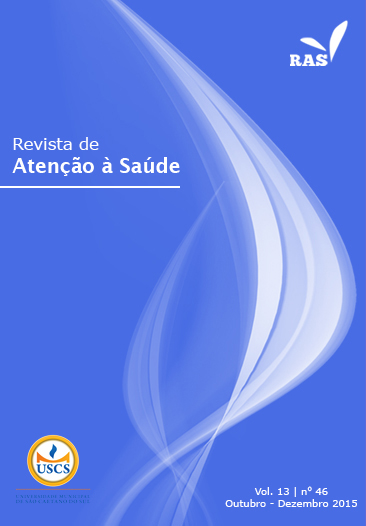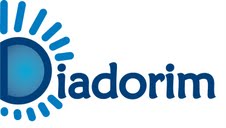COMPARATIVE STUDY OF MUSCLE STRENGTH, BALANCE AND QUALITY OF LIFE AMONG ELDERLY PRACTITIONERS AND OLDER HYDROTHERAPY SEDENTARY OF CUIABÁ (MT), BRAZIL
DOI:
https://doi.org/10.13037/ras.vol13n46.3001Keywords:
Quality of life, muscle strength, balance, elderly.Abstract
Introduction: Brazil has a population of 15 million people aged 60 years or over. This population hasshown a growth of 5% in the last 50 years and will reach in 2025 on the sixth place in the ranking ofcountries with the highest number of elderly people among its population. Hydrotherapy is a therapeuticmethod that use the physical principles of the water together the kinesiotherapy to prevent, keep, retard,improve or treat physical dysfunctions of the aging. Objective: Evaluate muscle strength, balance andquality of life among elderly practitioners of hydrotherapy and sedentary elderly in Cuiabá (MT). Materialsand methods: Were included elderly between 60 to 90 years, practitioners and non-hydrotherapypractitioners. The muscle strength was assessed by Kendall Force Scale, balance by Functional BalanceScale of Berg and the quality of life through the SF-36 questionnaire. Was used the Student t-test witha 5% level of significance for comparison of the values between the groups, and to analyze the qualityof life was used measures of central tendency and dispersion. Results: The 19 elderly practitioners of hydrotherapy had better performance in the muscle strength, balance and quality of life when comparedthe sedentary elderly group. All variables presented statistical relevance with p-value <0.05. Conclusion:Hydrotherapy contributes positively to improving the quality of life, balance and muscle strength in theelderly.Downloads
References
1. Trentini CM. Qualidade de vida em idosos. [tese de doutorado]. Porto Alegre: Faculdade de Medicina, Universidade Federal do Rio Grande do Sul. Programa de pós-graduação em ciências médicas: psiquiatria; 2004.
2. Marchi Netto FL. Aspectos biológicos e fisiológicos do envelhecimento humano e suas implicações na saúde do idoso. Pensar a Pratica. 2004;7:75-84.
3. Seidl EMF, Zannon CMLC. Qualidade de vida e saúde: aspectos conceituais e metodológicos. Cad Saúde Pública. 2004;20(2):580-588.
4. Vecchia RD, Ruiz T, Bocchi SM, Corrente JE. Qualidade de vida da terceira idade: um conceito subjetivo. Rev Bras Epidemiologia. 2005;8(3):246-252.
5. Candeloro JM, Caromano FA. Efeito de um programa de hidroterapia na flexibilidade e na força muscular de idosas. Rev Bras Fisioterapia. 2007;11(4):303-309.
6. Carvalho Filho ET, Netto MP, Passini U. In: Filho ETC. Geriatria Fundamentos, clínica e terapêutica. 2a ed. São Paulo: Atheneu. 2005. 193-210.
7. Mota J, Ribeiro JL, Carvalho J, Matos MG. Atividade física e qualidade de vida associada à saúde em idosos participantes e não participantes em programas regulares de atividade física. Rev bras Educ Fís Esp. 2006;20(3):219-225.
8. Coelho ESP, Pedroso MFBP. Avaliação da qualidade de vida em idosos residentes no município de Santos / SP. Rev Ceciliana. 2012;4(1):4-8.
9. Resende SM, Rassi CM, Viana FP. Efeitos da hidroterapia na recuperação do equilíbrio e prevenção de quedas em idosas. Rev Bras Fisioterapia. 2008;12(1):57-63.
10. Pereira VV, Maia RA, Silva SMCA. The functional assessment Berg Balance Scale is better capable of estimating fall risk in the elderly than the posturographic Balance Stability System. Arq Neuro-Psiquiatr. 2013;71(1):5-10.
11. Figliolino JAM, Morais TB, Berbel AM, Corso SD. Análise da influência do exercício físico em idosos com relação a equilíbrio, marcha e atividade de vida diária. Rev Bras Geriatria e Gerontologia. 2009;12(2):227-238.
12. Carvalho J, Oliveira J, Magalhães J, Ascensão A, Mota J, Soares JMC. Força muscular em idosos II – Efeito de um programa complementar de treino na força muscular de idosos de ambos os sexos. Rev Portuguesa de Ciências do Desporto. 2004;4(1):58-65.
13. Fernandes APS, Oliveira RC. O idoso e a ludicidade. Publ. UEPG Humanit. Sci Linguist Lett Arts 20(2):151-160, jul./dez. 2012. Disponível em: <http://www.revistas2.uepg. br/index.php/humanas>. [acesso em: 20 mar. 2013].
14. Januário RSB, Junior HS, Liutti MC, Decker D, Molari M. Qualidade de vida em idosos ativos e sedentários. ConScientiae Saúde 2011;10(1):112-121.
15. Mendonça TT, et al. Risco cardiovascular, aptidão física e prática de atividade física de idosos de um parque de São Paulo. Rev Bras Ci e Mov. 2004;12(2):19-24.
16. Pimenta F, Simil FF, Tôrres HOG, Amaral CFS, Rezende CF, et al. Avaliação da qualidade de vida de aposentados com a utilização do questionário SF-36. Rev Assoc Med Bras. 2008;54(1):55-60.
17. Caromano FA, Candeloro JM. Fundamentos da Hidroterapia para idosos. Arq Ciênc. Saúde Unipar. 2001;5(2):187-195.
18. Becker BE, Ruoti RG, Morris DM, Cole A. Reabilitação aquática. São Paulo: Manole; 2000.
19. Norm A, Hanson B. Exercícios aquáticos terapêuticos. 1ª ed. São Paulo: Manole;1998.
20. Toscano JJO, Oliveira ACC. Qualidade de Vida em Idosos com Distintos Níveis de Atividade Física. Rev Bras Med Esporte. 2009;15(3):169-173.
21. Castro M, Caiuby AVS, Draibe AS, Canziani MEF. Qualidade de vida de pacientes com insuficiência renal crônica em hemodiálise avaliada através do instrumento genérico SF-36. Rev Assoc Med Bras. 2003;49(3):245-249.
22. Gabilan YPL, Perracini MR, Munhoz MSL, Ganança FF. Fisioterapia Aquática para Reabilitação Vestibular. Rev Acta Orl. 2006; 24(1): 25-30.
23. Bruni BM, Granado FB, Prado RA. Avaliação do equilíbrio postural em idosos praticantes de hidroterapia em grupo. Rev O Mundo da Saúde. 2008;32(1):56-63.
24. Ruwer LS, Rossi AG, Simon LF. Equilíbrio no idoso. Rev Bras Otorrinolaringologia. 2005;71(3):298-303.
25. Carregaro RL, Toledo AM. Efeitos fisiológicos e evidências científicas da eficácia da fisioterapia aquática. Rev Mov. 2008;1(1):23-27.
26. Teixeira D, Junior S, Lima D, Gomes S, Brunetto A. Efeitos de um programa de exercício físico para idosas sobre variáveis neuro-motoras, antropométrica e medo de cair. Rev Bras Fís Esp. 2007;21(2):107-120.
27. Douris P, Southard V, Varga C, Schauss W, Gennaro C, Reiss A. The Effect of Land and Aquatic Exercise on Balance Scores in Older Adults. Journal of Geriatric Physical Therapy. 2003;26(1):3-6.
28. Oliveira LC, Pivoto EA, Vianna PCP. Análise dos resultados de qualidade de vida em idosos praticantes de dança sênior através do SF-36. Rev Acta Fisiatr. 2009;16(3):101-104.
Downloads
Published
Issue
Section
License
Copyright (c) 2015 Viviane Aparecida Martins Salicio, Tainara da Silva Mattos, Vanessa Lauriany de Arruda Brandalise, Walkiria Shimoya-Bittencourt, Marcos Adriano Salicio

This work is licensed under a Creative Commons Attribution-NonCommercial-NoDerivatives 4.0 International License.
Policy Proposal for Journals offering Free Delayed Access
Authors who publish in this magazine agree to the following terms:
- Authors maintain the copyright and grant the journal the right to the first publication, with the work simultaneously licensed under a Creative Commons Attribution License after publication, allowing the sharing of the work with recognition of the authorship of the work and initial publication in this journal.
- Authors are authorized to assume additional contracts separately, for non-exclusive distribution of the version of the work published in this magazine (eg, publishing in institutional repository or as a book chapter), with the acknowledgment of the authorship and initial publication in this journal.
- Authors are allowed and encouraged to publish and distribute their work online (eg in institutional repositories or on their personal page) at any point before or during the editorial process, as this can generate productive changes, as well as increase impact and citation of the published work (See The Effect of Open Access).









